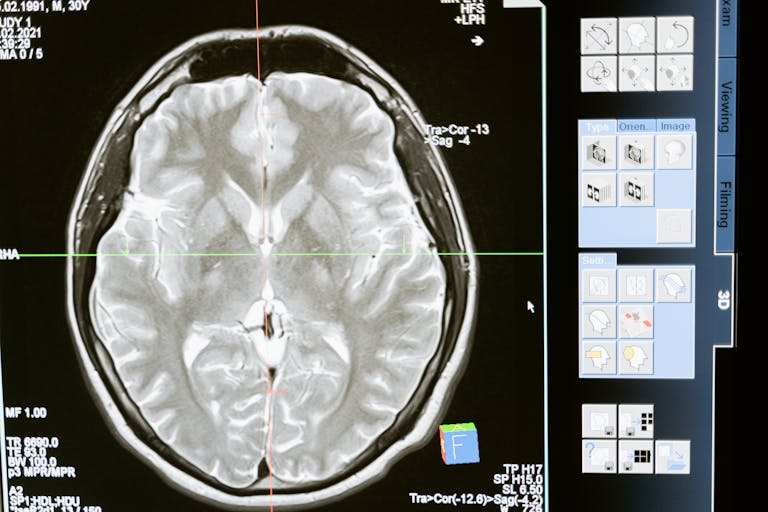In a country where medical records and newborn blood spots have quietly powered some of the world’s largest psychiatric studies, researchers have traced a surprisingly large share of attention deficit hyperactivity disorder risk to just three rare genetic variants.
What the scientists found
In a Nature study drawing on whole exome data from 8,895 people diagnosed with ADHD and 53,780 control individuals, an international team led by Aarhus University’s iPSYCH project identified rare variants in three genes with unusually large effects: MAP1A, ANO8 and ANK2. Individuals carrying damaging versions of these genes faced odds of ADHD that were roughly five to fifteen times higher than those without them, an effect size far larger than the small nudges typically seen for common genetic variants in complex psychiatric conditions.
Put simply, these variants are uncommon, but when they appear they matter. The team’s gene based analysis found odds ratios of 13.31 for MAP1A, 15.31 for ANO8 and 5.55 for ANK2. The work builds on earlier genome wide studies showing ADHD is highly polygenic, with thousands of common variants each contributing tiny amounts of risk. The new study shows that a small subset of rare coding changes can sharply increase risk on their own.
“We can now, for the first time, point to very specific genes in which rare variants confer a high predisposition to developing ADHD,” said senior author Professor Anders Børglum from the Department of Biomedicine at Aarhus University. “The identified variants very likely have a highly damaging effect on the genes, and they show us precisely which genes and fundamental biological mechanisms may be affected.”
Signals in the brain’s circuitry
The biology aligns with what clinicians see. The three genes sit in pathways that support synapses, the neuronal cytoskeleton and ion transport. The study’s protein interaction work showed that the networks around MAP1A, ANO8 and ANK2 are rich in proteins tied to synaptic function. Expression analyses linked the top rare variant risk genes to several types of neurons, with especially strong ties to dopaminergic and GABAergic cells, which help regulate attention, reward and impulse control.
“Our findings support that disturbances in brain development and function are central to the development of ADHD,” said co first author Ditte Demontis, Professor at the Department of Biomedicine at Aarhus University. “We have also analyzed which proteins interact with the proteins encoded by the three identified ADHD genes, and we have identified a larger protein network that also plays a role in other neurodevelopmental disorders including autism and schizophrenia. This provides insight into the biological links across several psychiatric diagnoses.”
Two of the genes, ANO8 and ANK2, are connected to calcium handling and membrane channel biology. MAP1A is a microtubule associated protein that shapes the neuronal skeleton and synaptic architecture. Together they point to synaptic communication as a core vulnerability in some people with ADHD.
Rare does not mean deterministic
Context is key. These variants are rare, and the disorder remains strongly polygenic overall. The researchers also showed that rare and common risks add together. People who carried a high burden of common risk variants and who also had at least one of the rare, damaging variants were at the highest overall risk. That additive pattern mirrors findings in other neurodevelopmental conditions and helps explain why ADHD presents so differently across individuals.
The study also underscored that genetic risk can ripple into life outcomes. In Danish registry analyses, individuals with ADHD who carried damaging variants in constrained genes were more likely to complete only primary school and to experience lower socioeconomic status than those with ADHD who did not carry such variants. In a separate clinical sample, each ultra rare deleterious variant in constrained genes was associated with an average decrease of 2.25 IQ points. These results describe group level associations, not individual destiny, but they hint at how biology and environment may intersect over time.
Why this matters for care and for science
There is no clinical genetic test for ADHD today, and a diagnosis is still based on history, observation and functional impairment. The new findings do not change that standard, but they offer a sharper map of the biology that treatments eventually must address. Stimulant medications remain the front line for many patients, and they act on dopamine signaling. The convergence of rare variant biology on dopaminergic and GABAergic neurons provides an independent line of evidence that the circuits clinicians have targeted for decades are central to the disorder.
At the same time, the study suggests routes for discovery beyond neurotransmitter reuptake. Disrupted synaptic scaffolding, cytoskeletal dynamics and channel behavior are all plausible mechanistic starting points for new therapies. They also offer markers that researchers can track in patient derived neurons and animal models as they move from association to function.
“The study provides a new and concrete direction for mapping the biological mechanisms involved in ADHD, because we now know causal genes with high effect variants,” said Børglum. “They give us insight into some of the fundamental biological processes, which can guide the design of deeper mechanistic studies, for example to identify new therapeutic targets.”
Shared threads across diagnoses
The protein networks that surround the three ADHD genes were enriched for genes implicated in autism, developmental disorders and schizophrenia by rare variant studies. That overlap tracks with the clinical reality of comorbidity and shared symptoms. The team did not find evidence that people with ADHD and comorbid conditions carry a universally higher load of damaging rare variants across all constrained genes. Instead, the signal seems to concentrate in gene sets that are specific to the comorbid diagnosis, a hint that future, larger samples could tease out more disorder specific rare risk genes.
What comes next
The authors emphasize that three genes are not the whole story. Their analyses flagged 17 additional genes that look promising but did not meet the strict threshold for significance in this study. Larger sequencing cohorts and deeper functional work will be needed to confirm those candidates and to learn how different rare variants alter neuronal development and signaling.
“Yes, and we are only at the beginning of uncovering these rare high effect variants,” said co first author and postdoctoral researcher Jinjie Duan. “Our calculations show that there are many more rare causal variants that can be identified in even larger studies. In the current study, we can already point to 17 additional genes with rare variants that are very likely to be causal.”
As the catalog of rare, high impact variants grows, ethical questions will follow. Prenatal screening and consumer genetics are not designed to interpret complex neurodevelopmental risk, and the rarity of these variants means that population level screening is unlikely to be informative without careful counseling. For now, the clearest implications are for research and for better understanding. The study gives scientists specific genes, pathways and cell types to pursue, and it gives families something concrete in a field that can feel abstract.






